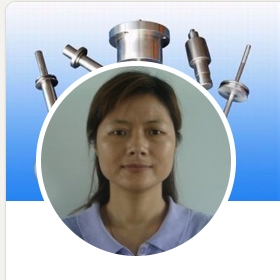Discover the key advantages of 5 Axis CNC Machining. Learn how it works, where it’s used, and why it’s the future of precision manufacturing.
Introduction to 5 Axis CNC Machining
In today’s fast-changing world, speed and precision are more important than ever. This is especially true in manufacturing. That’s where 5 Axis CNC Machining comes in. It’s a powerful technology that helps make detailed and complex parts for many industries like aerospace, medical, and automotive.

Unlike traditional 3-axis machines that move a tool in just three directions (X, Y, and Z), 5-axis machines add two more directions. These extra directions help the machine reach more sides of a part in one go. That means fewer setups, faster production, and more accuracy.
This method saves time and also reduces errors. Engineers and designers love using it because they can create complex parts that were not possible before. With the help of computer programs, the whole process becomes even smoother.
In this article, we’ll explain how 5 Axis CNC Machining works, what benefits it offers, where it’s used, and how you can choose the right service partner. Whether you’re new to the topic or looking to improve your understanding, this guide is made for you.
5 Axis CNC Machining
5 Axis CNC Machining is a modern technique that uses computer control to cut and shape materials. It allows a cutting tool to move in five directions at once. This lets manufacturers make very detailed parts with smooth curves, deep holes, and complex shapes.
Let’s break down the five axes:
- X-Axis: Left to right
- Y-Axis: Front to back
- Z-Axis: Up and down
- A-Axis: Rotation around the X-axis
- B-Axis: Rotation around the Y-axis
By combining all five movements, the machine can reach almost every surface of a part without stopping. This makes the process much faster and more accurate.
Here’s a simple table to show the movement:
| Axis | Direction | Purpose |
| X | Left to Right | Basic positioning |
| Y | Front to Back | Basic positioning |
| Z | Up and Down | Depth control |
| A | Rotates around X (tilting part) | Angle control |
| B | Rotates around Y (spindle tilt) | Tool direction adjustment |
This technology helps create items like engine parts, medical implants, or custom tools that need exact shapes and fine detail.
There are mainly two types of 5-axis CNC machines, and both have their special uses.
Trunnion-Style Machines
In these machines, the table holding the part can tilt and rotate. This means the tool stays in one place, while the part moves. Trunnion machines are great for parts that are small or need deep cuts. They are also perfect for curved surfaces.
Swivel-Head Machines
These machines move the cutting tool instead of the table. The part stays still while the tool moves around it. This style is good for large or heavy parts, because the part doesn’t need to be flipped or repositioned.
| Fonctionnalité | Trunnion Machine | Swivel-Head Machine |
| Movement | Part moves | Tool moves |
| Best for | Small, complex parts | Large, heavy parts |
| Temps de préparation | More | Less |
| Flexibilité | Less for large items | More for heavy components |
Choosing the right type depends on what kind of parts you need to make and how often.
Benefits of Using 5 Axis CNC Machining
Here’s why many people choose 5 Axis CNC Machining:
- Fewer Setups Needed: You can finish a part in one go without stopping and repositioning it.
- Better Accuracy: Less handling means fewer chances of mistakes.
- Faster Production: More parts in less time, which saves money.
- Complex Shapes: You can make detailed parts with holes, curves, and slopes.
- Better Surface Quality: Smooth finishes reduce polishing time.
- Saves Tool Life: The tool always cuts at the right angle, so it lasts longer.
- Lower Cost Over Time: Though the machines are expensive, they save money in the long run.
- Smaller Workspaces: One machine can do the job of many.
- Increased Safety: Fewer setups reduce worker risk.
- Supports Innovation: Helps designers build parts they couldn’t make before.
These benefits explain why more companies are switching to this advanced technology.
Industries That Use 5 Axis CNC Machining
This technology is used across many sectors:
- Aérospatiale : Making engine parts, turbines, and structural supports.
- Médical : Creating implants, surgical tools, and dental components.
- Automobile : Producing engine parts, gears, and custom car parts.
- Energy: Building wind turbine parts and power plant tools.
- Defense: Making weapons and high-strength equipment.
- Électronique : Cutting detailed parts for devices and computers.
In every case, the main goal is to create complex, strong, and accurate parts that meet strict standards.
Common Materials Used in 5 Axis CNC Machining
Different jobs need different materials. Here are some of the most common:

| Type de matériau | Examples | Use Case |
| Metals | Aluminum, Steel, Titanium | Aerospace, Medical, Automotive |
| Plastiques | ABS, Nylon, Polycarbonate | Electronics, Prototyping |
| Composites | Carbon Fiber, Fiberglass | High-strength, light components |
Key Features to Consider:
- Hardness: Affects how the material can be cut.
- Heat Resistance: Important for engine parts.
- Weight: Lightweight parts are needed in aerospace and robotics.
- Coût : Some metals like titanium are expensive but offer great strength.
Challenges and Limitations
Though powerful, 5 Axis CNC Machining has some downsides:
- High Initial Cost: Machines and software are expensive.
- Complex Programming: Takes skill and time to program the toolpaths.
- Long Learning Curve: New users need training.
- Maintenance Needs: Advanced machines need more care.
- Not for Simple Parts: Overkill for basic jobs.
Still, these issues can be solved with planning and training. The benefits far outweigh the challenges for most companies.
Design Tips for Better 5 Axis CNC Machining
Good design makes machining easier. Here are some useful tips:
- Use Draft Angles: This helps with tool access and finish.
- Avoid Thin Walls: These can bend or break during cutting.
- Combine Parts: Where possible, design one complex part instead of assembling many.
- Minimize Undercuts: Harder to machine and may need special tools.
- Stay Within Machine Limits: Know the size and axis limits of your machine.
Working closely with the machine shop or engineer early in the design helps avoid costly mistakes.
Future of 5 Axis CNC Machining
Technology keeps moving forward. Here’s what’s coming:
- AI and Automation: Machines will soon set up and adjust themselves.
- Digital Twins: Virtual models help plan and test cuts before real machining.
- More Affordable Machines: Prices will drop as demand grows.
- Smart Sensors: These track wear and alert users when tools need changes.
- Sustainable Practices: Machines are using less power and making less waste.
These trends will make 5 Axis CNC Machining even more useful and common in future factories.
How to Choose the Right CNC Machining Partner?

A good partner makes a big difference. Look for:
- Expérience : Do they know how to handle complex jobs?
- Technology: Do they use up-to-date machines and software?
- Quality Checks: Do they test parts before sending them?
- Vitesse : Can they deliver on time?
- Communication: Do they listen and share progress updates?
10 Tips for 5 Axis CNC Machining
- Always start with a clean CAD file.
- Choose the right material for your part.
- Avoid sharp corners in design.
- Know your machine’s axis limits.
- Use proper tool lengths to avoid vibration.
- Double-check your toolpath simulation.
- Avoid over-engineering simple parts.
- Combine parts where possible.
- Plan for future production—don’t just think prototype.
- Work closely with experienced machinists.
FAQ
What is 5 Axis CNC Machining used for?
It’s used to create detailed and complex parts in industries like aerospace, medical, and automotive.
Is 5 Axis CNC better than 3 Axis?
Yes, it allows for more accuracy, faster production, and the ability to make complex shapes.
Quels matériaux peuvent être usinés ?
Aluminum, titanium, steel, plastics, and composite materials are commonly used.
How much does a 5 Axis CNC machine cost?
Prices can range from $100,000 to over $500,000 depending on features and size.
Can it be used for low-volume jobs?
Yes. It’s great for both prototypes and mass production.
Do I need special software?
Yes. CAM software is needed to program the machine’s toolpaths.
How long does it take to learn?
Learning takes weeks or months, depending on your background.
What industries benefit most?
Aerospace, medical, automotive, and defense benefit the most.
Is it safe?
Yes, when operated correctly and with safety procedures in place.
Can it replace manual machining?
In many cases, yes. But manual machining is still useful for simple parts and repairs.
Conclusion
5 Axis CNC Machining has changed the game in manufacturing. It brings speed, precision, and design freedom to industries around the world. While it may cost more up front, the long-term gains in quality and productivity are huge.
Whether you’re building jet engines or custom tools, this technology gives you the power to make complex parts quickly and accurately. With ongoing advances in automation and AI, the future looks even brighter.
If you’re thinking of using 5 Axis CNC Machining, now is the time to explore your options. The right knowledge and partner can help you bring your designs to life faster, better, and smarter.
Need custom CNC parts?
Trust SYM Precision Machining for reliable 5 Axis CNC solutions – from prototype to full-scale production.



